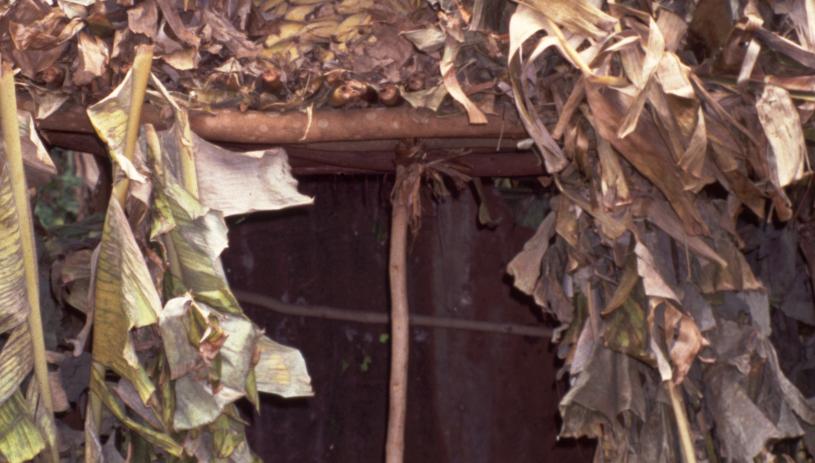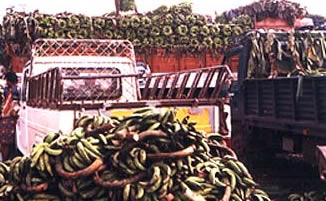Harvesting & Storage
-
Bananas are harvested at various stages of its maturity depending upon the purpose for which it is cultivated, such as culinary, table purpose etc., and distance to the market (3/4 full maturity in Robusta for distant markets, while full maturity for local market etc.).
-
The assessment of the harvesting maturity is itself is a skilled job. The harvesting in India is usually done by visual judging. The duration of flowering to maturation in days can also be taken as a guide for harvest index.
-
In many of the perennial plantations, depending upon the time of setting of followers, the age of follower sucker at the time of setting it, cultural practices like manuring, irrigation followed will determine the time of harvest, and most often a continuous harvest all throughout the year can be obtained.
-
After harvesting, the pseudostems should be cut leaving a stump of about 0.6 m height. This practice is called muttocking.
-
Experimental evidence showed that the left over stump with its stored food material continues to nourish the daughter sucker (follower) till it withers and dries up.
Ripening
-
Bananas are not usually allowed to ripen on the tree as it takes long time. Moreover, the fruit-peel splits, fruit ripens unevenly and fails to develop good colour and aroma, hence the marketable quality deteriorates. Therefore, banana needs to be ripened artificially.
-
On arrival at the destination, the banana bunches are immediately sold to wholesale dealers who store the fruits in loose heaps in godowns and ripen them in lots as per the need of the retail dealers.
|
|
|
|
-
Smoke treatment causes ripening of the bunches within 3 days. Ripening is also done by keeping the bunches covered with gunny sacks.

Storage
-
Banana can be stored at a temperature slightly above 550 F (130 C) and a relative humidity of 85 to 95 per cent for about three weeks, and is ripened in a week or two at 62-700 F (16.5-210 C).
-
Banana fruit becomes blackened at lower temperatures and should not be placed in a refrigerator. Internally, the banana is carried either by rail or by road in unrefrigerated carriage.
-
On the other hand, the produce for overseas trade is carried in refrigerated ships, the banana being kept in a cool air circulation at about 52-560 F (11-13.50 C). Premature ripening is probably the biggest single cause of loss during storage.
-
Keeping the fruit in relatively high concentration of CO2 and low concentration of O2 can prolong storage life.
-
Dipping of bananas at 200 ppm TBZ has been approved and recommended as a post-harvest treatment.
-
A double coating of 12% wax emulsion prolonged the storage life of Dwarf Cavendish banana by 10-12 days at 580 F (14.50 C).
Storage
-
Banana can be stored at a temperature slightly above 550 F (130 C) and a relative humidity of 85 to 95 per cent for about three weeks, and is ripened in a week or two at 62-700 F (16.5-210 C).
-
Banana fruit becomes blackened at lower temperatures and should not be placed in a refrigerator. Internally, the banana is carried either by rail or by road in unrefrigerated carriage.
-
On the other hand, the produce for overseas trade is carried in refrigerated ships, the banana being kept in a cool air circulation at about 52-560 F (11-13.50 C). Premature ripening is probably the biggest single cause of loss during storage.
-
Keeping the fruit in relatively high concentration of CO2 and low concentration of O2 can prolong storage life.
-
Dipping of bananas at 200 ppm TBZ has been approved and recommended as a post-harvest treatment.
-
A double coating of 12% wax emulsion prolonged the storage life of Dwarf Cavendish banana by 10-12 days at 580 F (14.50 C).


Source: http://www.ikisan.com/
